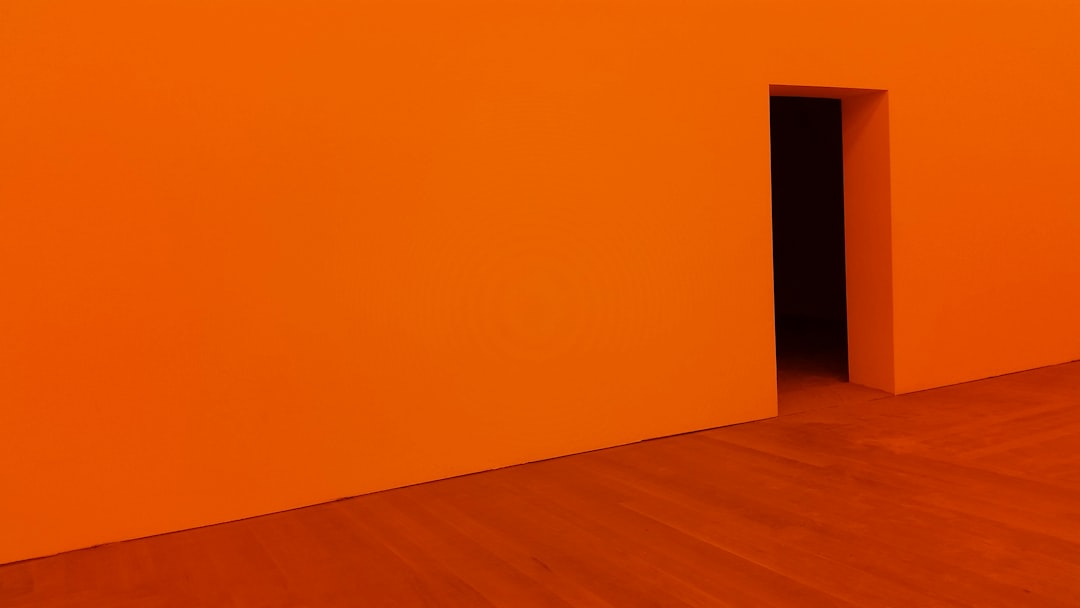Support our educational content for free when you purchase through links on our site. Learn more
Quick Answer: Green walls, also known as living walls or vertical gardens, offer numerous advantages and disadvantages. They provide natural insulation, reduce energy bills, promote biodiversity, and improve air quality. However, they can also cause potential structural damage, require ongoing maintenance, and pose a fire risk if not properly cared for. Overall, green walls are a visually appealing and environmentally friendly addition to any space, but they require careful planning and investment to ensure long-term success.
Have you ever walked into a building and been greeted by a stunning wall covered in lush greenery? These living walls, also known as green walls or vertical gardens, have become increasingly popular in recent years. They not only add a touch of natural beauty to indoor and outdoor spaces but also offer a range of benefits. However, like any other design feature, green walls come with their own set of advantages and disadvantages. In this article, we’ll explore the good, the bad, and the green aspects of living walls, providing you with a comprehensive understanding of this unique and eco-friendly design trend.
Table of Contents
- Quick Answer
- Quick Tips and Facts
- Background: The Rise of Green Walls
- The Benefits of Green Walls
- The Downsides of Green Walls
- Risk vs Reward: Evaluating Living Walls
- Maintenance and Upkeep of Green Walls
- FAQ
- Conclusion
- Recommended Links
- Reference Links
Quick Answer
Green walls, also known as living walls or vertical gardens, offer numerous advantages and disadvantages. They provide natural insulation, reduce energy bills, promote biodiversity, and improve air quality. However, they can also cause potential structural damage, require ongoing maintenance, and pose a fire risk if not properly cared for. Overall, green walls are a visually appealing and environmentally friendly addition to any space, but they require careful planning and investment to ensure long-term success.
👉 CHECK PRICE on: Amazon | Walmart | Etsy
Quick Tips and Facts
- Green walls, also known as living walls or vertical gardens, are structures covered in vegetation that can be installed on both interior and exterior walls.
- They offer a range of benefits, including natural insulation, reduced energy bills, improved air quality, and increased biodiversity.
- Green walls require careful planning, installation, and ongoing maintenance to ensure their long-term success.
- Potential downsides of green walls include potential structural damage, ongoing maintenance requirements, and the risk of fire if not properly cared for.
- When considering a green wall, it’s important to evaluate the risk vs reward and consider the long-term investment required.
Background: The Rise of Green Walls

Before we dive into the advantages and disadvantages of green walls, let’s take a moment to explore the background and history of this unique design trend. Green walls have been around for centuries, with early examples dating back to the Hanging Gardens of Babylon, one of the Seven Wonders of the Ancient World. However, it wasn’t until the 20th century that the concept of vertical gardens gained popularity again.
In recent years, green walls have become increasingly popular due to their aesthetic appeal and environmental benefits. They have been embraced by architects, interior designers, and homeowners alike, as they offer a unique way to incorporate nature into urban environments. With advancements in technology and design, green walls have become more accessible and easier to install, making them a viable option for a wide range of spaces.
The Benefits of Green Walls
Green walls offer a multitude of benefits, both for the environment and for the people who interact with them. Let’s explore some of the key advantages of incorporating green walls into your space.
Benefit 1: Natural Insulation and Energy Savings
✅ Green walls provide natural insulation, reducing interior temperatures and energy bills.
One of the most significant advantages of green walls is their ability to provide natural insulation. The vegetation acts as a barrier, reducing heat transfer and maintaining a more stable indoor temperature. This can result in reduced energy consumption for heating and cooling, leading to lower energy bills. In fact, studies have shown that green walls can reduce heat load by up to 35% in some buildings, such as the iconic One Central Park in Sydney.
Benefit 2: Biodiversity and Habitat Creation
✅ Green walls promote biodiversity by providing a habitat for native species and attracting local wildlife.
In addition to their aesthetic appeal, green walls also contribute to biodiversity by providing a habitat for native plants and attracting local wildlife. The vegetation on the walls can support a variety of insects, birds, and other small animals, creating a mini-ecosystem within the built environment. Some green walls are even designed to incorporate edible plants, such as herbs and leafy green vegetables, providing a source of fresh produce.
Benefit 3: Improved Air Quality
✅ Green walls improve air quality by reducing air and noise pollution.
Plants are natural air purifiers, absorbing carbon dioxide and releasing oxygen through the process of photosynthesis. By incorporating green walls into indoor and outdoor spaces, you can improve air quality by reducing the levels of pollutants and increasing oxygen levels. Additionally, green walls can act as a natural sound barrier, reducing noise pollution and creating a more peaceful environment.
Benefit 4: Aesthetic Appeal and Biophilic Design
✅ Green walls enhance a building’s visual appeal and create a connection with nature.
One of the most obvious benefits of green walls is their aesthetic appeal. They add a touch of natural beauty to any space, creating a visually stunning focal point. Green walls can be customized to suit different design styles and preferences, ranging from lush tropical gardens to minimalist arrangements. In addition to their visual appeal, green walls also contribute to biophilic design, which emphasizes the connection between humans and nature. Studies have shown that exposure to nature, even in the form of indoor plants, can have a positive impact on mental health and well-being.
The Downsides of Green Walls
While green walls offer numerous benefits, it’s important to consider the potential downsides before incorporating them into your space. Let’s explore some of the challenges and disadvantages of green walls.
Downside 1: Potential Structural Damage
❌ Green walls can cause potential structural damage if not properly installed and maintained.
One of the main concerns with green walls is the potential for structural damage. The weight of the vegetation, combined with the moisture retained by the plants, can put additional stress on the building’s structure. If not properly installed and maintained, green walls can cause cracks in walls, damage to plumbing systems, and other structural issues. It’s crucial to work with experienced professionals who can ensure that the installation is done correctly and that the necessary precautions are taken to protect the building.
Downside 2: Ongoing Maintenance and Responsibility
❌ Green walls require ongoing maintenance and clear responsibility to ensure their long-term success.
Another challenge of green walls is the need for ongoing maintenance. The plants require regular watering, pruning, and fertilizing to thrive. Additionally, green walls may require specialized irrigation systems and lighting to provide the optimal growing conditions. It’s important to consider the long-term commitment and responsibility required to maintain a green wall. Without proper care, green walls can quickly become neglected and lose their visual appeal.
Downside 3: Fire Risk
❌ If not properly maintained, dry and dead plants in green walls can present a significant fire risk.
Fire safety is a crucial consideration when it comes to green walls. If the plants are not properly maintained and allowed to dry out, they can become highly flammable. Dry and dead vegetation can act as fuel in the event of a fire, increasing the risk of spreading flames. It’s essential to have a clear maintenance plan in place and ensure that the green wall is regularly inspected to remove any potential fire hazards.
Risk vs Reward: Evaluating Living Walls
When considering the installation of a green wall, it’s important to evaluate the risk vs reward. While green walls offer numerous benefits, they also require careful planning, investment, and ongoing maintenance. Here are some key factors to consider:
- Budget: Green walls can vary significantly in cost, depending on factors such as size, complexity, and maintenance requirements. It’s essential to establish a realistic budget and consider the long-term investment required.
- Location and Environment: The location and environment of the green wall will play a significant role in its success. Factors such as sunlight exposure, wind conditions, and access to water will need to be taken into account during the planning and installation process.
- Maintenance and Responsibility: Green walls require ongoing maintenance to ensure their health and longevity. It’s important to establish clear responsibility for maintenance and have a plan in place to address any issues that may arise.
- Professional Expertise: Installing a green wall is a complex process that requires professional expertise. Working with experienced architects, designers, and horticulturists will help ensure that the green wall is installed correctly and that the necessary precautions are taken to protect the building.
By carefully evaluating these factors and working with professionals, you can minimize the risks and maximize the rewards of incorporating a green wall into your space.
Maintenance and Upkeep of Green Walls
To ensure the long-term success of a green wall, proper maintenance and upkeep are essential. Here are some key considerations:
- Watering: Green walls require regular watering to keep the plants healthy. The frequency and amount of water needed will depend on factors such as the type of plants, the climate, and the location of the green wall. Automated irrigation systems can help ensure consistent watering.
- Pruning and Trimming: Regular pruning and trimming are necessary to maintain the shape and health of the plants. This includes removing dead or damaged foliage and controlling the growth of the plants.
- Fertilizing: Green walls may require regular fertilizing to provide the necessary nutrients for plant growth. It’s important to use a balanced fertilizer specifically formulated for green walls and follow the manufacturer’s instructions.
- Pest and Disease Control: Regular monitoring for pests and diseases is crucial to prevent infestations and maintain the health of the plants. Integrated pest management techniques, such as biological controls and organic pesticides, can be used to manage pests without harming the environment.
- Lighting: Green walls installed in indoor spaces may require supplemental lighting to provide the necessary light for plant growth. LED grow lights are commonly used for this purpose, as they are energy-efficient and can be customized to meet the specific needs of the plants.
- Regular Inspections: Regular inspections of the green wall are necessary to identify any issues or potential problems. This includes checking for signs of structural damage, monitoring plant health, and addressing any maintenance needs.
By following these maintenance guidelines and working with professionals, you can ensure that your green wall remains healthy and visually appealing for years to come.
FAQ

What are the benefits of green walls?
Green walls offer numerous benefits, including natural insulation, reduced energy bills, improved air quality, and increased biodiversity. They also enhance the aesthetic appeal of a space and create a connection with nature.
Read more about “How Long Do Vertical Gardens Last? … 🌿”
What are the pros and cons of artificial green walls?
Artificial green walls offer the advantage of low maintenance and the ability to create a green space in areas with limited natural light. However, they lack the air-purifying benefits of live plants and may not provide the same level of visual appeal.
What are the challenges of green walls?
The challenges of green walls include potential structural damage, ongoing maintenance requirements, and the risk of fire if not properly cared for. It’s important to carefully consider these challenges before installing a green wall.
Read more about “What are the Negatives of Green Walls? … 🌿🚫”
What are the disadvantages of moss walls?
Moss walls offer a unique and visually appealing alternative to traditional green walls. However, they require specific environmental conditions to thrive and may not be suitable for all spaces. Additionally, moss walls may require more frequent maintenance to prevent drying out.
Conclusion

In conclusion, green walls offer a range of advantages and disadvantages. They provide natural insulation, reduce energy bills, promote biodiversity, and improve air quality. However, they can also cause potential structural damage, require ongoing maintenance, and pose a fire risk if not properly cared for. When considering a green wall, it’s important to evaluate the risk vs reward and consider the long-term investment required. By working with professionals and following proper maintenance guidelines, you can enjoy the beauty and benefits of a green wall in your space.
So, are you ready to bring a touch of nature into your life with a stunning green wall? With careful planning and ongoing maintenance, you can create a visually stunning and environmentally friendly space that will leave a lasting impression. Remember, the rewards of a green wall far outweigh the challenges, so don’t hesitate to embark on this green journey!
Recommended Links
- Benefits of Community Gardens
- Community Garden Events
- Community Garden Policies
- Gardening for Beginners
- Garden Design Ideas
- Vertical Gardening Designs: Grow Up, Not Out! 2024 🌱
